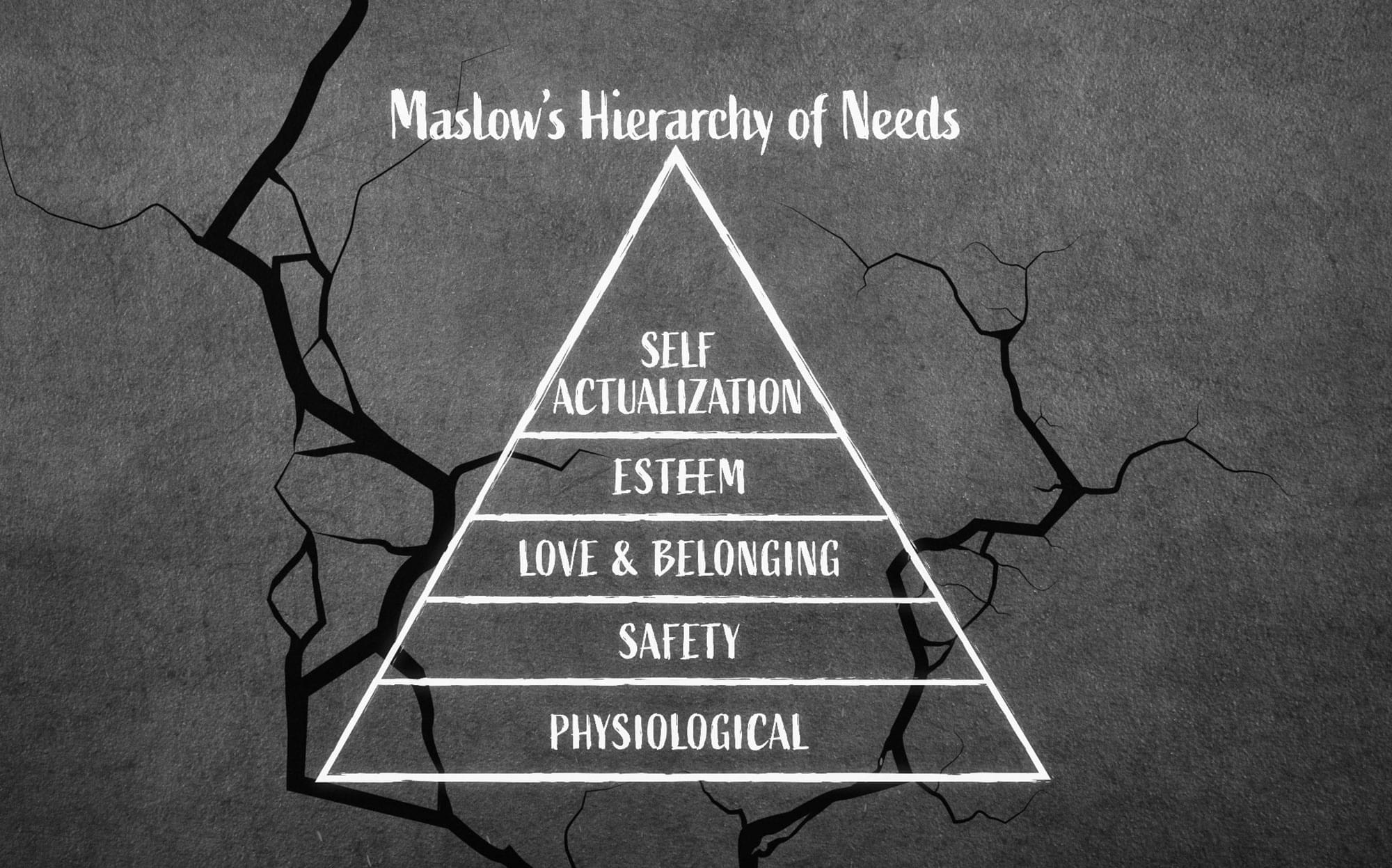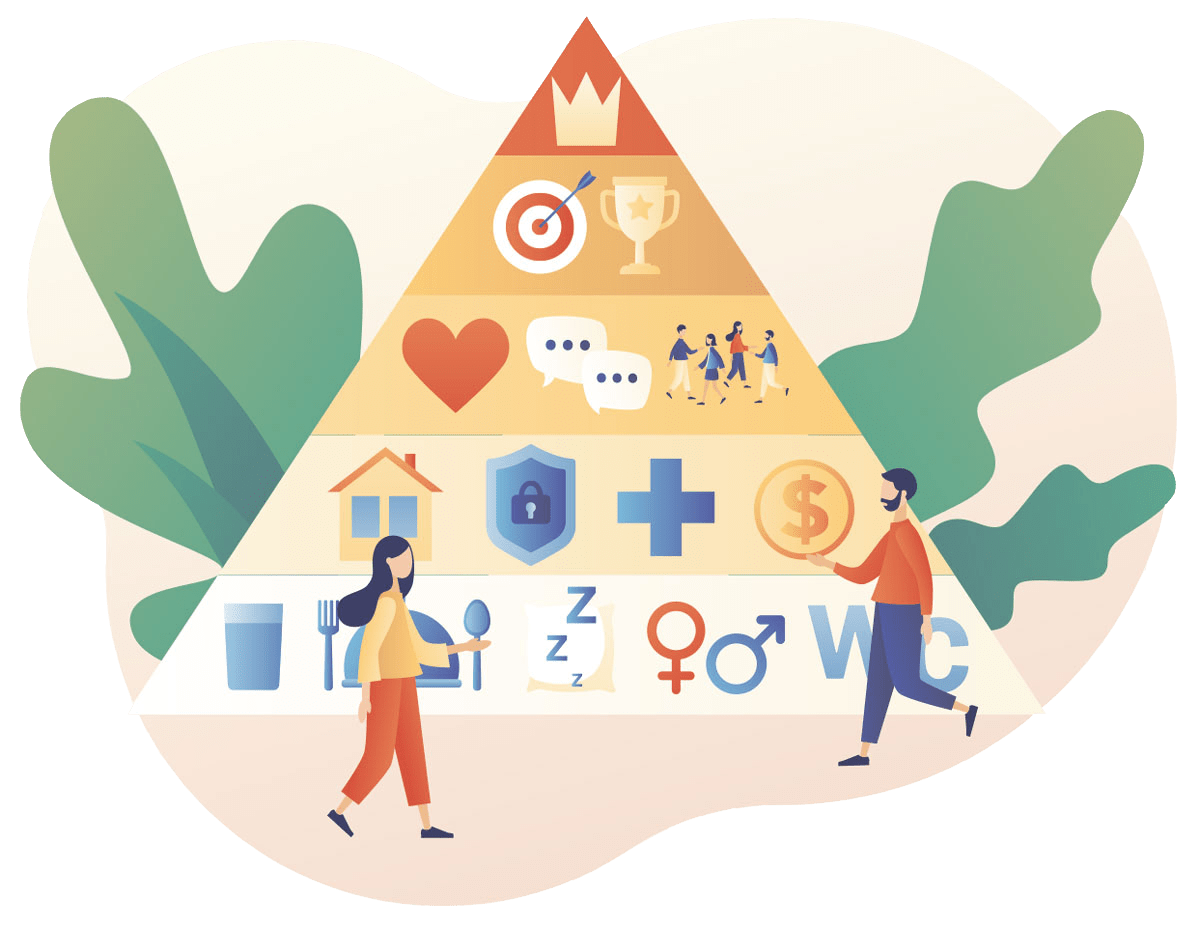
was reading the news the other day and an article referenced that business leaders are getting used to the “post-pandemic world.”
How can that be? COVID-19 is still active around the globe. While I long for “post-pandemic” situations, I think it is foolish to think this pandemic will soon be behind us.
That said, I believe it prudent to consider the current disruptive circumstances as an opportunity. We should make good use of the evolving situation and develop innovative strategies to navigate through what is yet to come. I think Abraham Maslow could help us.
Maslow developed his Theory of Human Motivation in 1943. Despite numerous folks poking holes in it for nearly 60 years, it remains a very popular framework in sociology research, psychology and education.
Per Maslow, there are five human needs. These are often depicted as hierarchical levels within a pyramid. From the bottom of the hierarchy upward, the needs are:
- Physiological (food, water, shelter, clothing, etc.)
- Safety (job security, health, property, etc.)
- Love and belonging (friendship, community, connection, etc.)
- Esteem (ego, power, recognition, etc.)
- Self-actualization (purpose, development, creativity, etc.)
Maslow believed the needs lower in the hierarchy must be satisfied before individuals can attend the needs higher in the hierarchy.
I have been working with and coaching business leaders for nearly two decades and, admittedly, I disregarded Maslow’s theory in my early years. Whether it was because of my ignorance or my privilege (assuming that because I had the lower needs met, other individuals had their needs met as well), I focused my energy on identifying how managers could provide or otherwise nourish the higher needs of their teams. I focused on esteem and self-actualization because I thought this was where productivity, efficiency, innovation, quality and accountability resided.
I was wrong.
I realized my mistake years ago and I started providing advice and counsel to leaders regarding cultivating the lower three needs (physiological; safety; and love and belonging) for their teams. To my delight, simple and quick strategies began to yield positive, long-term results.
COVID created chaos around the globe and employers everywhere were disrupted. Like many other leaders, I was frustrated because what had once been a decently productive and efficient workforce was no longer so. Try as I might, my quest for efficiency and productivity could not be realized.
Meanwhile, my employees were increasingly disappointed and disenfranchised because I, the boss they thought cared about them, was behaving as if only the work mattered. I can assure you that millions of other employees shared my team’s concerns.
Maslow knew what matters, and his hierarchy served as a gentle reminder. Not only did it unleash a bit more empathy from me, it also illuminated the path before me.
Maslow’s Physiological Needs (food, water, shelter, clothing, etc.) were and may continue to be threatened. With the disruption to the economy in 2020, many feared they would lose their homes, not be able to secure necessary resources, be forced to rely upon social services or others, etc. While many solutions and stop-gap measures have since been offered, wading through these benefits or resources has proved to be tedious or overwhelmingly convoluted.
Nearly every component of Maslow’s Safety Needs (job security, health, property, etc.) were and continue to be threatened. Businesses shut their doors in early 2020, and while many of them are open or beginning to resume “normal” operations, things continue to change and much is still unpredictable. That said, millions of us have endured a dramatic blow to feelings of security or stability, and we likely have sustained damage to our competence and confidence.
COVID did not discriminate; all of us were vulnerable to this health threat. As infections and death counts rose, it became a matter of when, not if, this virus would affect our own families and friends. Furthermore, while we faced the threat of physical health risks, our mental health truly suffered. A recent CDC report based on surveys conducted in late June of 2020 offered that 31 percent of respondents reported symptoms of anxiety or depression, 13 percent reported having started or increased substance use, 26 percent reported stress-related symptoms, and 11 percent reported having serious thoughts of suicide in the past 30 days. These statistics suggest that a startling number of our employees may not be coping with the disruption as successfully as we would have expected or hoped.
Moreover, supply chains everywhere were disrupted and many were and are still unable to secure the necessary resources to keep themselves, their loved ones and/or their employees safe.
The Love and Belonging Needs (friendship, community, connection, etc.) were and continue to be threatened because of the need to remain physically isolated. Even the strongest of relationships need literal human connection (touch), the shared energy and demonstrated compassion and empathy of a face-to-face conversation, or the luxury of absorbing the full gamut of non-verbal communication cues. But with shelter-in-place orders, mask and physical proximity guidelines, etc., many of us felt isolated, alone or forgotten.
With the three foundational needs not being met, it is no wonder employees are not as productive, are not as accountable, and are not as efficient as they once were. And with employers touting productivity, productivity, productivity in our remote environments, it is no wonder employees feel their employers do not care about them.
I am a pragmatic leader, and I believe that during times of disruption it is wise to keep things simple. That said, I went back to the basics and, in this case, engaged in some practical and easy activities to nurture the foundational needs.
Physiological Needs: food, water, shelter, clothing, etc.
I addressed the physiological needs of our workforce by asking questions:
- “Are you keeping your workday reasonably managed? Are you making sure you’re not working all the time simply because it’s possible?”
- “What can we do to ensure you take a ‘real’ lunch break?”
- “Do you need some help making sure that a dedicated workspace can be used so you have something physical to ‘arrive to’ at the start of your shift and ‘leave’ at the end of your shift?”
- “What resources might we be able to coordinate/secure for you?”
Depending upon the answers to these questions, I knew how to address concerns, remove obstacles, and otherwise provide solutions to ensure their physiological needs were nourished. I believe if we can demonstrate to our employees that we care about these things, we will quickly find our efforts clear the way for their confidence and optimism to flourish.
Safety Needs: job security, health, property, etc.
I openly and transparently engaged with the workforce to ensure these needs were met. I tried my best to do the following:
- I consistently held regular team meetings with a healthy mix of “what I know,” “what I don’t yet fully know,” and “what would you like to know?” items on the agenda regarding the business (revenue/financial projections, sustainability plans, etc.). Take note: honesty and reasonable transparency are imperative for this!
- I worked hard to be clear and unambiguous about what we, leadership, were doing to protect our team members’ health. This included developing and committing to COVID-conscious protocols, and certainly included holding customers, clients, and business partners to the same standards. This included listening to our employees regarding their fears and concerns and providing credible and trusted resources to address those issues.
- I secured and articulated information about health-related resources. This included everything from copays to reimbursements. It included reminding individuals about the company’s Employee Assistance Program (EAP). And it included proactively checking in with those who had noted changes in their behavior just to make sure they were okay. I think this latter activity kept the lines of communication open so if they did need some extra support, additional resources, etc., they knew I cared enough to help.
- I scheduled huddles. During times of disruption, I think any semblance of consistency provides comfort, and time has the benefit of being somewhat easy to organize. I also believe that if we schedule our time, we are more likely to use it wisely. Therefore, I took the time to put quick engagements on the schedule. Fifteen minutes or so may not be much, but it went a long way to ensuring the lines of communication remained open. I found that if I injected quick touch points throughout the week, I better enabled my team members to ask for help while allowing both of us to affirm assumptions, gain clarity and re-establish direction.
- While I didn’t do it here at my office, I encouraged my clients to develop a remote work committee (preferably a cross-functional group of employees and supervisors). This committee was the “go to” resource for remote/hybrid working solutions. Whether it was the company’s audio/video platform, a new collaborative project or task management software, a file management system, etc., there were sure to be lots of questions, concerns and mishaps regarding these tools and protocols. But the committee served as “experts” and “super users,” and by empowering them to help others, the entire workforce was confident and competent using these new tools, which led to less fear or threat to safety and job security.

Love and Belonging Needs: friendship, community connection, etc.
I believe we should embrace the concept of community and friendships at work to enjoy incredible gains from our workforce. Moreover, during times of disruption, I believe we should make an extra effort to nourish this foundational need. To do so, I engaged in the below pragmatic and simple activities:
- I made slight changes to my vernacular to prove to my team that they had a welcomed spot with us. For example, consider the positive difference these types of statements might make:
“I care about you”
“you are a significant part of this team”
“you matter”
“I want to help”
“I understand”
“I appreciate”
“we are in this together” - When reasonable, I lightened up and asked our employees about their dog, their kids, their hobbies, etc. and refrained from passing judgment on any of it! While I am not a huge advocate of blurring work and personal boundaries, I also know that, provided we do not make it creepy or intrusive, and as long as we don’t allow it to take up an unreasonable amount of time, there is no reason not to inquire or share some personal information with our team. However, I also need to be the one to establish and articulate the boundaries of these types of exchanges, and I need to hold myself and others accountable to them.
- I encouraged collaborative communities for the work. Diverse and healthy project teams, proactive buddy systems, and work-sharing crews enable the perception of belonging and connection. The stronger these communities are, the better they can weather disruption. I tried to proactively model collaborative behavior, and I gently encouraged these concepts in others. When some of my team members began to use terms like “we” and “us,” I knew that these slight changes to how we did the work were building a better sense of community. As an added benefit, I think it helped with our mental health because it validated the fact that we were, indeed, together and not alone.
- I worked hard to shorten the distance. Figuratively speaking, snail mail and emails suggest distance. Texting, instant messages, and phone calls also create a perceived distance, while video calls shorten the apparent distance. But dropping in on someone, finding a convenient place to meet, or inviting them to come to you not only shortens the actual distance (in the moment) but also shortens the perceived distance overall. I made sure to create, allow or encourage this type of engagement. For example, during the lockdown periods of COVID, I met with my team members outside a convenient coffee shop. We would be in our own cars, side by side, windows down (even in winter with the heat on high). This simple and silly thing shortened the distance and created a meaningful exchange.
I do not believe Maslow’s top two needs in the hierarchy—esteem and self-actualization—should be ignored in tough times. Indeed, recognition, encouragement and empowerment are always welcomed and beneficial. However, during times of disruption, nurturing those needs should not take priority. I do not believe it is wise to stroke someone’s ego while ignoring the threats to their safety; therefore, I did not expect my team to “shoot for the stars” without first ensuring their launch points were secure and stocked.
As I wrote earlier, we are not enjoying “post-pandemic” times. The world, our nation, our workplaces, our teams, and our families are still in the middle of the pandemic. I am certainly getting accustomed to the ever-changing environment, but I recognize that our world will continue to be disrupted for quite some time. That said, our job as leaders is to stabilize what we can. We can do so by being mindful of Maslow matters.

Heather Kinzie serves as the chief operating officer for The STRIVE Group. With more than 20 years of organizational and workforce performance experience, Kinzie offers consultation; facilitation and mediation; content development and training; and coaching to clients around the country. She oversees a team of experts who utilize a broad, systematic and collaborative approach to analysis, problem solving and consultation. Recognizing the critical importance of leadership, communication and effective collaboration among teams, Kinzie is committed to helping clients improve communication, engagement and organizational performance.
Heather Kinzie serves as the chief operating officer for The STRIVE Group. With more than 20 years of organizational and workforce performance experience, Kinzie offers consultation; facilitation and mediation; content development and training; and coaching to clients around the country. She oversees a team of experts who utilize a broad, systematic and collaborative approach to analysis, problem solving and consultation. Recognizing the critical importance of leadership, communication and effective collaboration among teams, Kinzie is committed to helping clients improve communication, engagement and organizational performance.